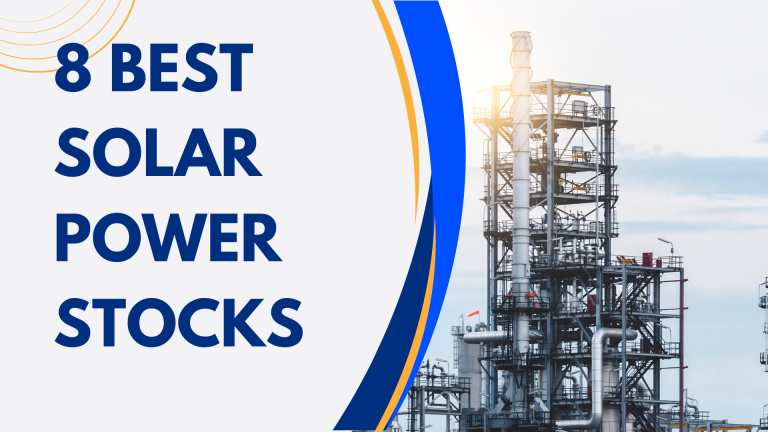Investing in Energy Exchange-Traded Funds (ETFs) has become increasingly popular as investors seek exposure to the energy sector without the need to purchase individual stocks. Energy ETFs offer a diversified approach to investing in various companies involved in the production and distribution of energy, including traditional fossil fuels and renewable energy sources. In this article, we will delve into what energy ETFs are, how they function, their potential benefits and risks, and provide guidance on how to invest in them effectively.
What Is an Energy ETF?
An Energy ETF is a type of exchange-traded fund that invests primarily in stocks of companies within the energy sector. This sector encompasses a wide range of industries, including oil and gas producers, renewable energy companies, utilities, and energy equipment manufacturers. By investing in an energy ETF, investors gain exposure to a diversified portfolio of energy stocks, which can help spread risk compared to investing in individual securities.
Types of Energy ETFs
There are several different types of energy ETFs, each focusing on various segments of the energy market:
- Traditional Energy ETFs: These funds primarily invest in companies involved in the exploration, production, and refining of fossil fuels, such as oil and natural gas.
- Renewable Energy ETFs: Focused on companies that produce energy from renewable sources like wind, solar, and hydropower, these ETFs reflect the growing trend towards sustainable energy.
- Multi-Sector Energy ETFs: These funds invest across both traditional and renewable energy sectors, providing a balanced approach to energy investment.
- Sector-Specific ETFs: Some ETFs focus on specific segments of the energy market, such as midstream infrastructure, which includes companies that operate pipelines and storage facilities.
- Leveraged and Inverse Energy ETFs: These specialized ETFs aim to amplify returns or hedge against declines in energy prices. They use derivatives and are generally more volatile and risky.
How Energy ETFs Work
Energy ETFs trade on major stock exchanges, just like individual stocks. When you buy shares of an energy ETF, you’re purchasing a small ownership stake in the combined portfolio of companies held by the fund. The value of the ETF fluctuates throughout the trading day, depending on the performance of the underlying stocks.
Most energy ETFs are designed to track a specific index, which comprises a collection of stocks that represent a particular segment of the energy market. For instance, a fund that tracks the S&P 500 Energy Index will hold shares in companies included in that index. ETF providers typically charge a management fee, known as the expense ratio, which can vary by fund but is often lower than the fees associated with mutual funds.
Benefits of Investing in Energy ETFs
- Diversification: Energy ETFs allow investors to spread their exposure across numerous companies within the energy sector, mitigating the risks associated with individual stock investments.
- Liquidity: Since energy ETFs trade on public exchanges, they offer high liquidity, making it easy for investors to buy and sell shares throughout the trading day.
- Cost-effective: With lower fees compared to actively managed mutual funds, energy ETFs often provide a cost-effective option for gaining exposure to the sector.
- Transparency: Most ETFs disclose their holdings regularly, allowing investors to see exactly what companies they are investing in.
- Accessibility: Energy ETFs can be easily purchased through brokerage accounts, making them accessible to individual investors.
Risks of Investing in Energy ETFs
- Market Volatility: Energy prices can be highly volatile due to factors such as geopolitical tensions, changes in regulations, and shifts in supply and demand, which can significantly impact the performance of energy ETFs.
- Sector-Specific Risk: Since energy ETFs focus solely on the energy sector, they are susceptible to downturns and challenges faced by the industry, which may not affect other sectors.
- Leverage Risk: Leveraged and inverse energy ETFs can lead to substantial losses, particularly in turbulent market conditions, making them suitable primarily for experienced investors.
- Regulatory Risks: Changes in government policies or regulations can affect the profitability of companies operating in the energy sector, impacting the performance of associated ETFs.
How to Invest in Energy ETFs
Investing in energy ETFs typically involves a few straightforward steps:
Step 1: Research
Before investing, it’s essential to conduct thorough research on various energy ETFs. Consider factors such as the fund’s investment objective, underlying index, expense ratio, and historical performance. Look for ETFs that align with your investment goals, risk tolerance, and time horizon.
Step 2: Choose a Brokerage Account
To invest in energy ETFs, you will need a brokerage account. Choose a brokerage that offers a user-friendly platform, low trading fees, and access to the ETFs you’re interested in. Many online brokerages provide commission-free trading on ETFs, making it easier for investors to buy and sell shares without incurring significant costs.
Step 3: Place an Order
Once you have selected an energy ETF and set up your brokerage account, you can place an order. You can choose between various types of orders, such as a market order, which purchases at the current market price, or a limit order, which sets a specific price at which you want to buy.
Step 4: Monitor Your Investment
After investing in an energy ETF, it’s crucial to monitor your holding periodically. Keep an eye on both the overall performance of the energy sector and the specific ETF you invested in. This will help you make informed decisions about whether to hold, sell, or buy additional shares.
Frequently Asked Questions (FAQ)
What are the tax implications of investing in energy ETFs?
Investing in energy ETFs may have tax implications, such as capital gains taxes when you sell your shares for a profit. Additionally, distributions from the ETF may be taxable as ordinary income, especially if they contain interest from bond holdings or other income-generating assets within the fund.
Can energy ETFs provide regular income?
Many energy ETFs may pay dividends to investors, particularly those investing in established companies within the sector. However, not all ETFs distribute dividends, and the amount and frequency can vary. It’s essential to check the fund’s dividend history and yield if income generation is part of your investment strategy.
How do I select the right energy ETF for my portfolio?
Selecting the right energy ETF depends on your investment objectives, risk tolerance, and view on the energy market. Consider the ETF’s focus—whether it’s on traditional or renewable energy—its expense ratio, historical performance, and the diversification of its holdings. You may also want to assess the fund size and the reputation of the provider.
Are energy ETFs suitable for long-term investing?
Energy ETFs can be part of a long-term investment strategy, particularly if you believe in the growth potential of the energy sector. However, given the sector’s volatility, it’s crucial to monitor the market trends and be prepared for short-term fluctuations that could impact your investment.
What are some popular energy ETFs?
Some well-known energy ETFs include:
- SPDR S&P Oil & Gas Exploration & Production ETF (XOP)
- iShares Global Clean Energy ETF (ICLN)
- Vanguard Energy ETF (VDE)
- Invesco Solar ETF (TAN)
- Energy Select Sector SPDR Fund (XLE)
Other popular options include ETFs focused on specific types of energy, such as oil, natural gas, or renewable energy sources. It’s essential to research and compare various funds before making an investment decision. Overall, energy ETFs can provide a convenient and cost-effective way for investors to gain exposure to the dynamic and ever-changing energy sector. Careful consideration and monitoring of these investments can help maximize potential benefits while managing associated risks. So if you are interested in investing in this sector, be sure to conduct thorough research, choose reputable ETFs that align with your goals, and stay informed about market trends and developments. Happy investing!
Energy ETFs trade on major stock exchanges, just like individual stocks. When you buy shares of an energy ETF, you’re purchasing a small ownership stake in the combined portfolio of companies held by the fund.
The value of the ETF fluctuates throughout the trading day, depending on the performance of the underlying stocks.
Selecting the right energy ETF depends on your investment objectives, risk tolerance, and view on the energy market. Consider the ETF’s focus—whether it’s on traditional or renewable energy—its expense ratio, historical performance, and the diversification of its holdings. You may also want to assess the fund size and the reputation of the provider.
Investing in energy ETFs may have tax implications, such as capital gains taxes when you sell your shares for a profit. Additionally, distributions from the ETF may be taxable as ordinary income, especially if they contain interest from bond holdings or other income-generating assets within the fund.
Many energy ETFs may pay dividends to investors, particularly those investing in established companies within the sector. However, not all ETFs distribute dividends, and the amount and frequency can vary. It’s essential to check the fund’s dividend history and yield if income generation is part of your investment strategy.
Energy ETFs can be part of a long-term investment strategy, particularly if you believe in the growth potential of the energy sector. However, given the sector’s volatility, it’s crucial to monitor the market trends and be prepared for short-term fluctuations that could impact your investment.
Some well-known energy ETFs include:
-
- SPDR S&P Oil & Gas Exploration & Production ETF (XOP)
-
- iShares Global Clean Energy ETF (ICLN)
-
- Vanguard Energy ETF (VDE)
-
- Invesco Solar ETF (TAN)
-
- Energy Select Sector SPDR Fund (XLE)
Other popular options include ETFs focused on specific types of energy, such as oil, natural gas, or renewable energy sources. It’s essential to research and compare various funds before making an investment decision. Overall, energy ETFs can provide a convenient and cost-effective way for investors to gain exposure to the dynamic and ever-changing energy sector.

Yaropolk Dabrowski is a distinguished energy investing editor and a prominent expert in financial topics, renowned for his keen insights and analytical approach to the complex intersections of energy markets and investment strategies. With over a decade of experience in the financial sector, Yaropolk has established himself as a thought leader, guiding investors through the intricacies of sustainable energy investments and the impact of global market trends. His expertise spans across diverse areas, including renewable energy, oil and gas, and emerging technologies, enabling him to provide nuanced perspectives that resonate within the financial community.
Recognized for his contributions to top-tier publications, including Forbes, Yaropolk’s writing blends rigorous research with accessible language, making him a sought-after commentator on financial developments. His collaborative efforts with leading investment firms and industry experts further cement his reputation as a trusted resource for investors looking to navigate the dynamic landscape of energy investment. Beyond his editorial work, Yaropolk is dedicated to educating the next generation of investors, advocating for responsible and sustainable investing practices that prioritize long-term growth and environmental stewardship.





